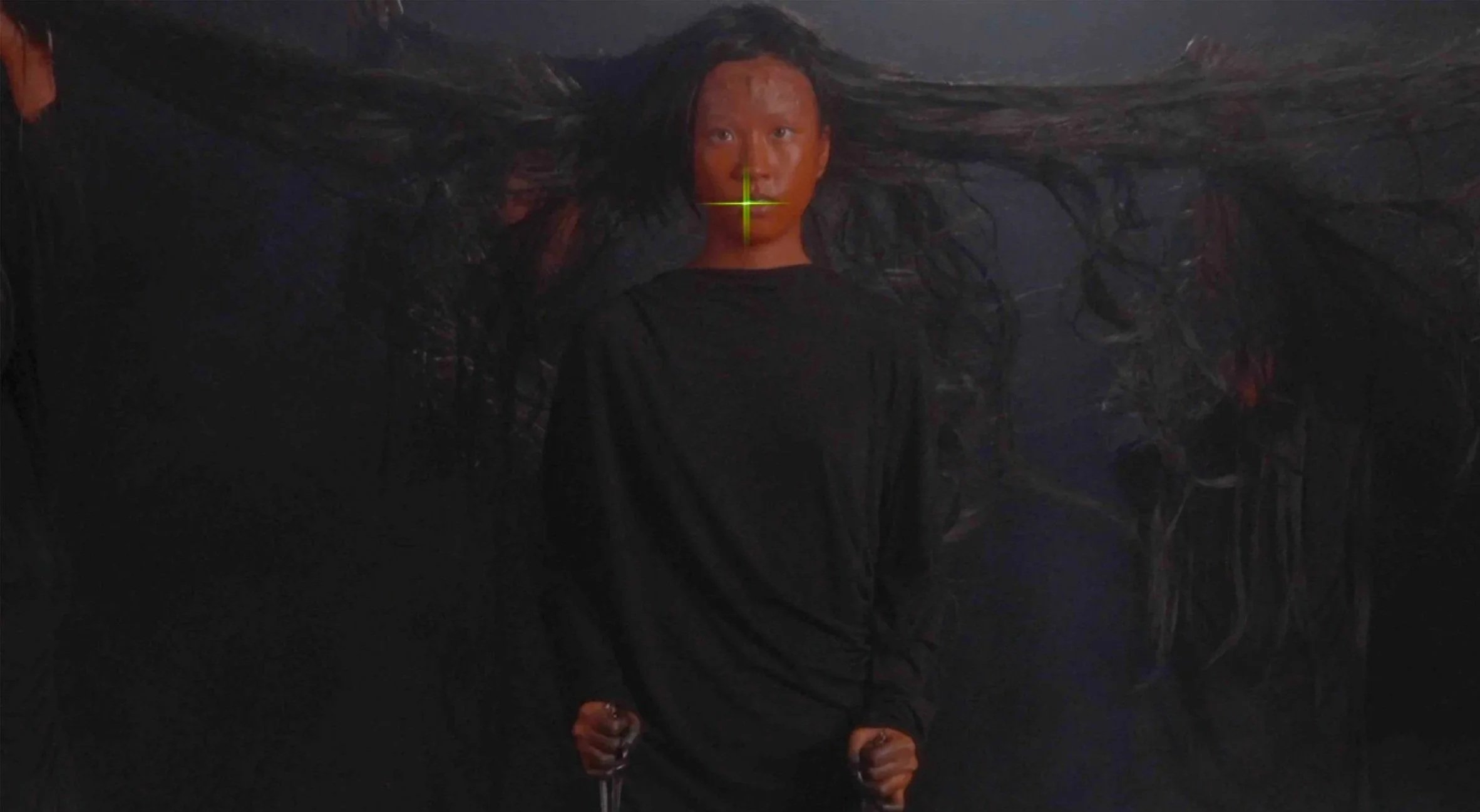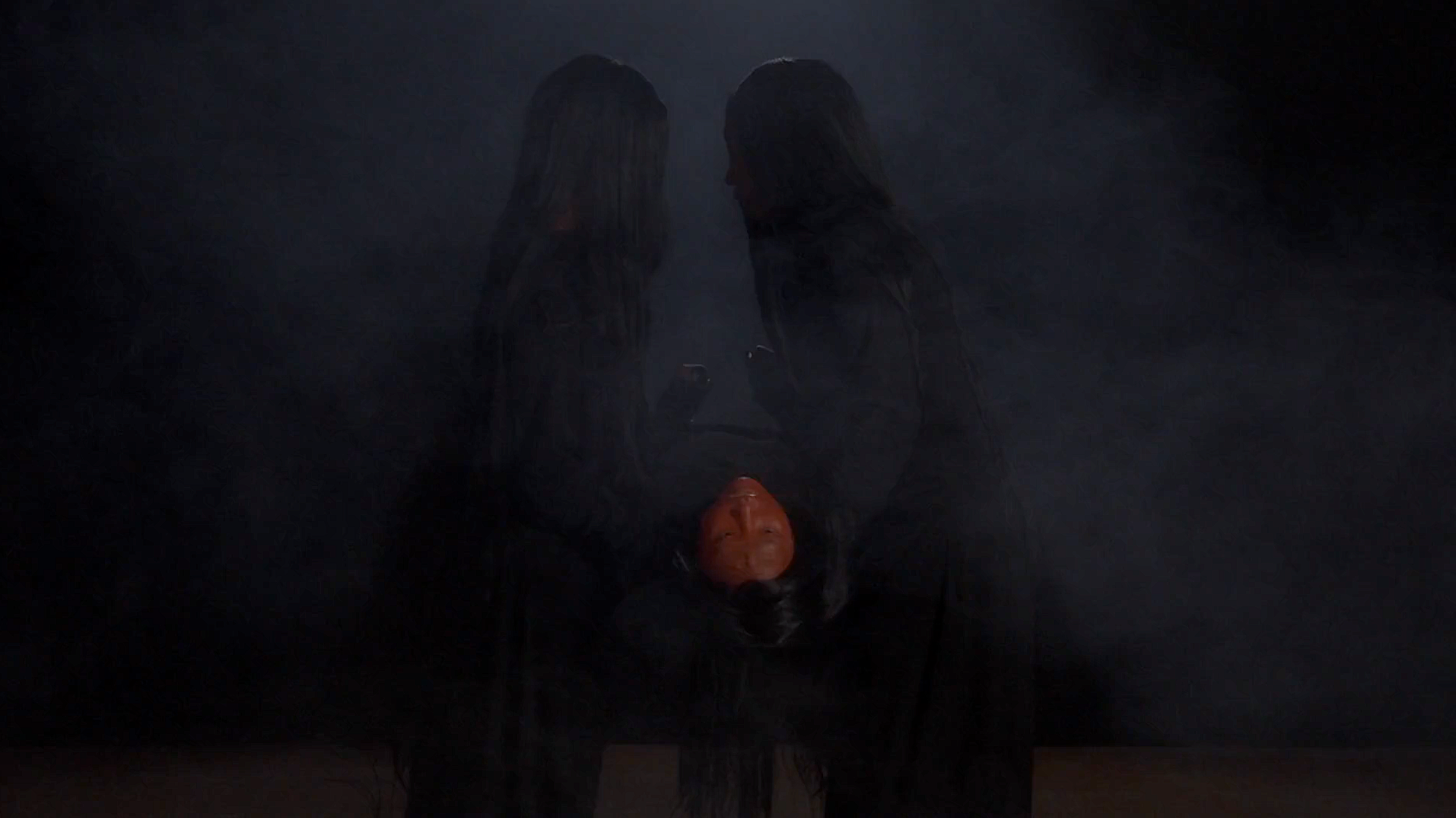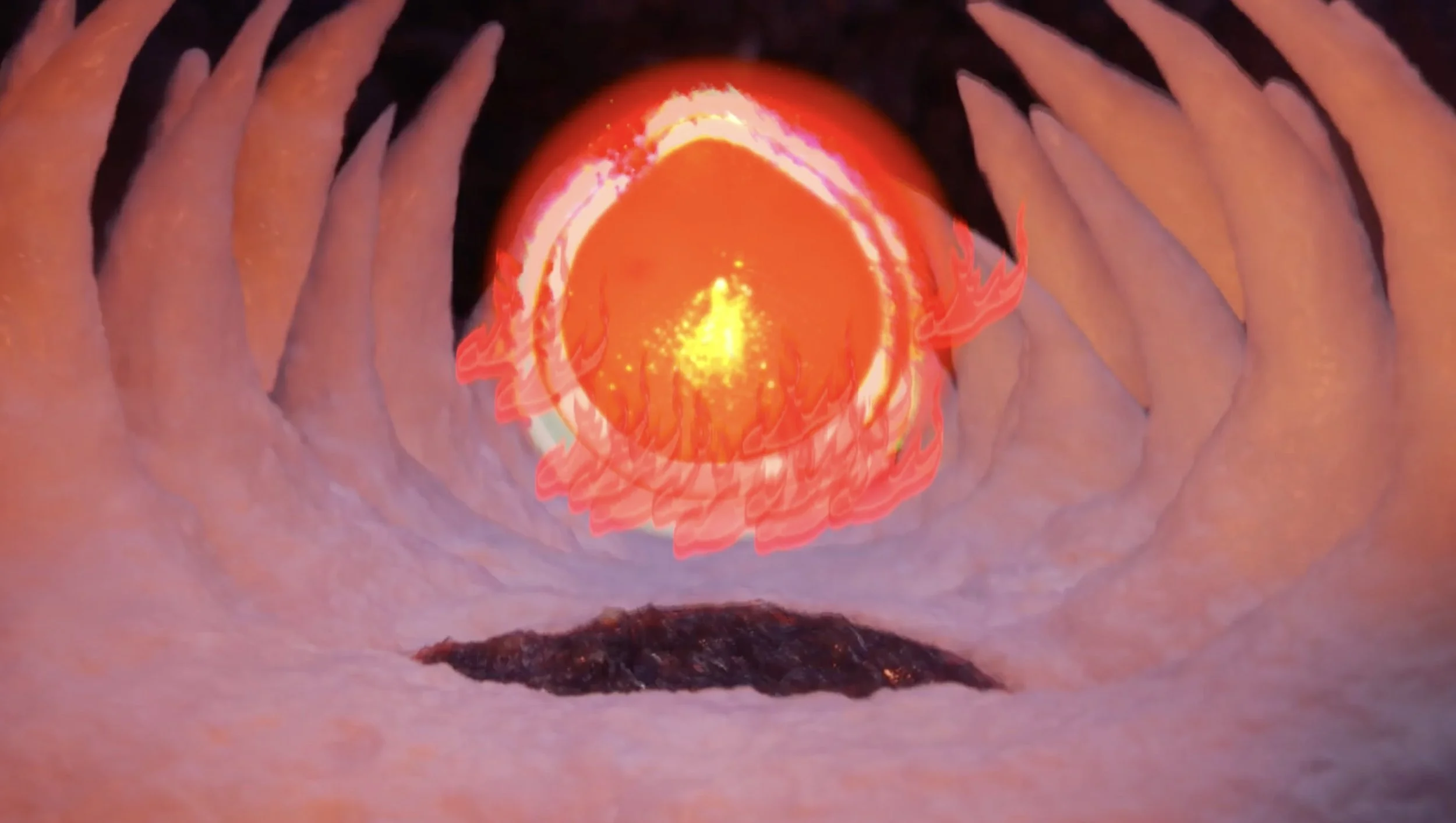Zijing Zhao

“My fascination with mythology is something I can’t quite control. I’m drawn to the way myths hover over the real world like a layer of mist, always more beautiful, more seductive than what we call ‘reality.’”
Zijing Zhao is a London-based artist whose moving-image practice blends mythology, digital worlds, and feminist explorations of the monstrous body. In this interview, she discusses her approach to simulation, her influences ranging from Buddhist legends to science fiction, and the collaborative world-building she develops alongside Rui Shi.
Could you tell us a bit about yourself and your background?
Hi! I’m Zijing Zhao, most of my friends call me Chocho. I was born in Nanchong, Sichuan, China. I’m an artist and researcher currently based in London, working mainly with moving image, animation, and digital media. After graduating from the Royal College of Art with an MA in Contemporary Art Practice, I’m now pursuing a practice-based PhD at Chelsea College of Arts. My research focuses on the monstrous body from a feminist perspective, exploring what creates the fear of the female monster, and the deeper philosophical and gendered questions that lie within it.
Your films often feature hybrid, shifting bodies that seem to exist between the digital and the physical. What draws you to using simulation as a way to explore identity and transformation?
I’ve never been quite sure how to answer this question, because my understanding of simulation might be a bit different from many artists working in digital art. My practice with moving image, animation, and digital media is very much grounded in materiality and labour, all my works are intentionally low-efficiency and highly labour-intensive. In my film Br00dm0ther’s e-Fable, for example, the work might appear to be purely simulated, but I was actually searching for a sense of materiality through simulation, something that emerges from the act of making itself. I built the figure of Br00dm0ther in Blender almost as if I were sculpting it by hand. What fascinates me is how labour blurs the boundary between simulation and reality, it becomes a form of re-enchantment, where making itself turns into a magical act.
Br00dm0ther’s e-Fable, 2024
Br00dm0ther’s e-Fable, 2024 (still)
Br00dm0ther’s e-Fable, 2024 (still)
There’s a strong sense of mythology in your work, where figures appear both human and non-human. How do you approach creating these beings, and what kinds of narratives or references shape them?
My fascination with mythology is something I can’t quite control. I’m drawn to the way myths hover over the real world like a layer of mist, always more beautiful, more seductive than what we call “reality.” When I retell these stories, I’m not simply reconstructing the past, but creating worlds that point toward the future, which imagined by forgotten pasts, buried under excessive violence and hyper-capitalization. This fascination probably began in my childhood, watching the beautifully crafted Journey to the West animations produced by the Shanghai Animation Film Studio. Those films first sparked my interest in Chinese folklore and Buddhist mythology. Later, as an undergraduate at Renmin University of China, I took courses in the Faculty of Literature that introduced me to Greek mythology, while my studies in philosophy opened a window into Taoist cosmology. What interests me most is how myth can re-enchant reality, how it allows us to learn new ways of knowing. For instance, Journey to the West reflects systems of bureaucracy and imperial hierarchy; Nezha’s act of self-disembowelment and rebirth from a lotus can be read as a queer narrative of transformation. In Mountain of Flames, a collaborative work with Rui Shi, we reimagine the story of Princess Miaoshan’s transformation into Guanyin from Chinese Buddhist legend — a myth that beneath its transcendence, still echoes the cruelty and bloodiness of women’s destinies that continue to play out in our world today.
You collaborate with artist Rui Shi on a duo project called. Could you tell us how this collaboration started and what ideas you’re exploring together through it?
We first met at the Royal College of Art, and our collaboration began during the pandemic in 2020, right around the time we were about to graduate. We were both locked down in our flat in Battersea, the world outside felt apocalyptic. Our shared fascination with mythology and science fiction naturally brought us together. The first work we made as a duo was the stop-motion animation Mountain of Flames. My obsession with myths and speculative fiction, combined with Rui’s background in concept design for sci-fi films, helped us build worlds in a very intuitive way. We’re now both doing our PhDs at UAL, and our conversations have expanded into queer theory, hauntology, monstrosity, video games, and horror narratives, ideas that keep evolving and keep us both excited.
Tell us a bit about how you spend your day / studio routine? What is your studio like?
I love walking to my studio after breakfast. At the start of the day, I usually write notes or make quick sketches, trying to capture the shapes I saw in my dreams. They often find their way into my next work. When I am painting, the studio feels very physical and material. When I am animating or editing, it turns into a kind of digital cave, with headphones on and several screens around me, and my sense of time slowly disappears. I enjoy shifting between these two states. The manual process reconnects me with materials, while the digital side brings me into a trance-like focus.
The Mountain of Reincarnation, 2020
Mountain of Flames, 2020
Miaoshan, 2023
What artwork have you seen recently that has resonated with you?
There are too many artists and artworks I love, so I would like to share a manga I recently revisited instead. It is Dorohedoro by Q Hayashida, whose drawings are filled with incredible energy and detail. Dorohedoro is set in a collapsing, post-apocalyptic world where the boundaries between sorcerers, humans, demons, and ghosts constantly blur, as do the boundaries between life and death. It is bloody and violent, yet filled with genuine love and friendship.
Is there anything new and exciting in the pipeline you would like to tell us about?
Rui and I are preparing a new exhibition titled Every Video Game Depicts an Apocalypse, which is planned to open in London early next year. The project combines multi-channel moving images, sculpture, and interactive digital landscapes, continuing our research into queer ecology and the construction of monstrous worlds. It explores the idea that the apocalypse is not an end, but an ongoing process of transformation.
All images courtesy of the artist
Interview publish date: 20/11/2025
Interview by Richard Starbuck





